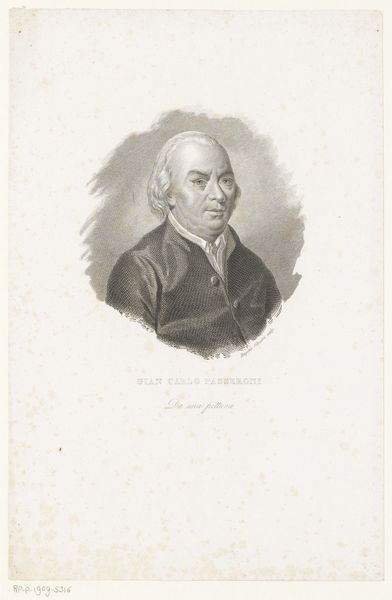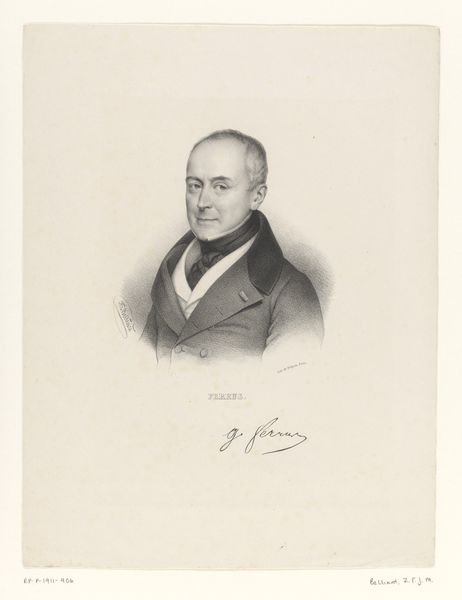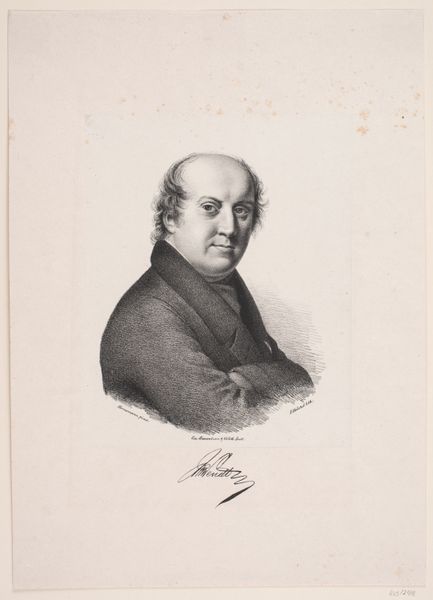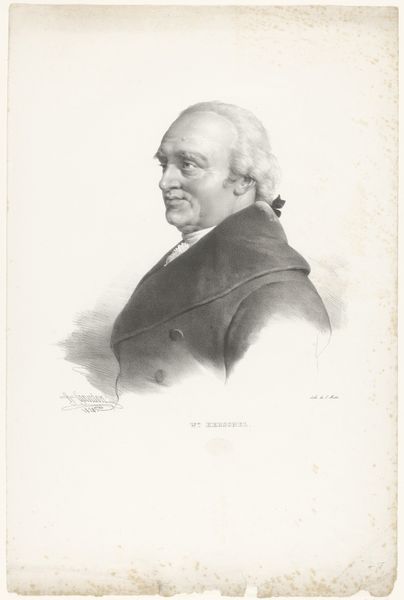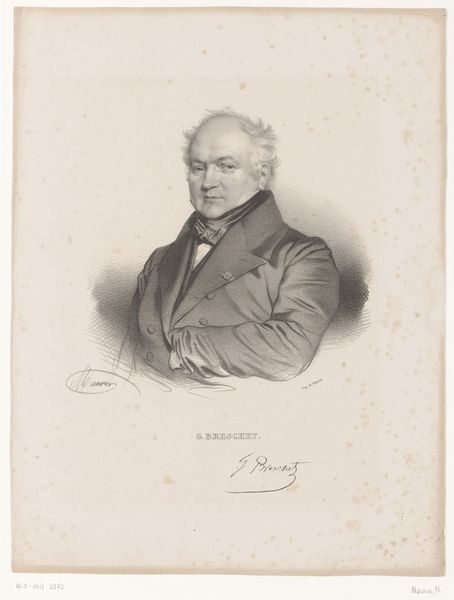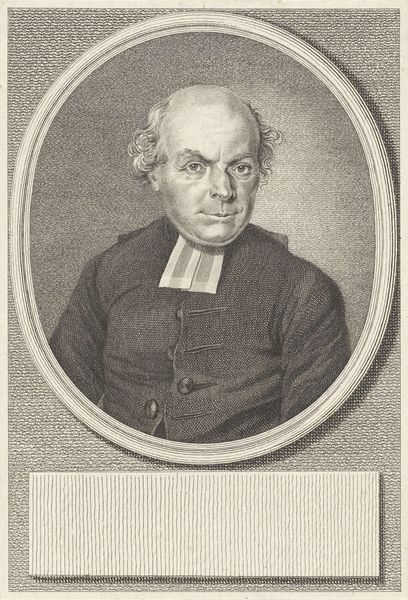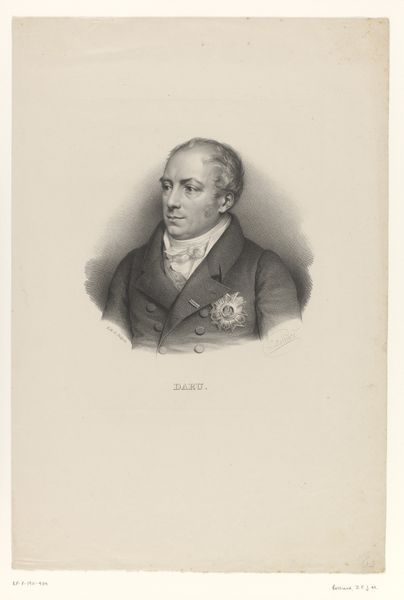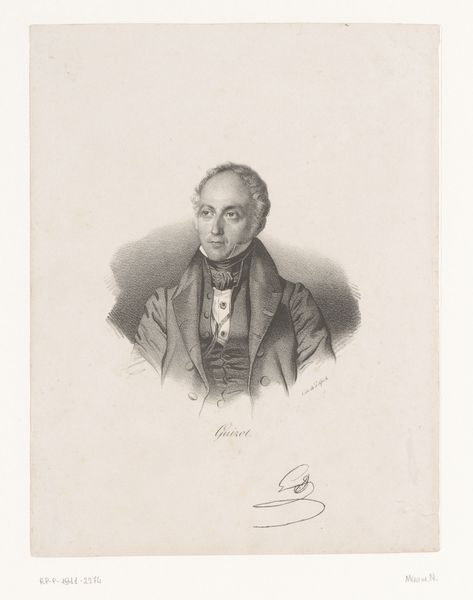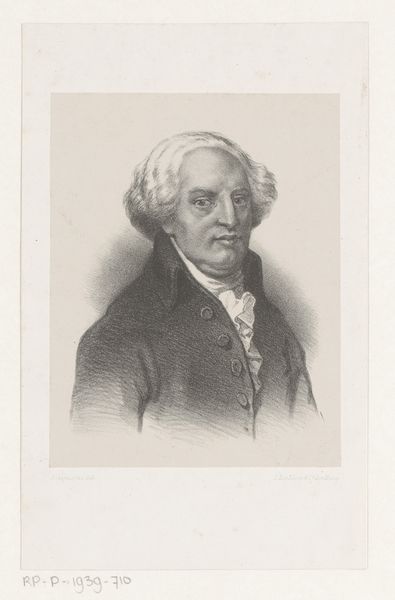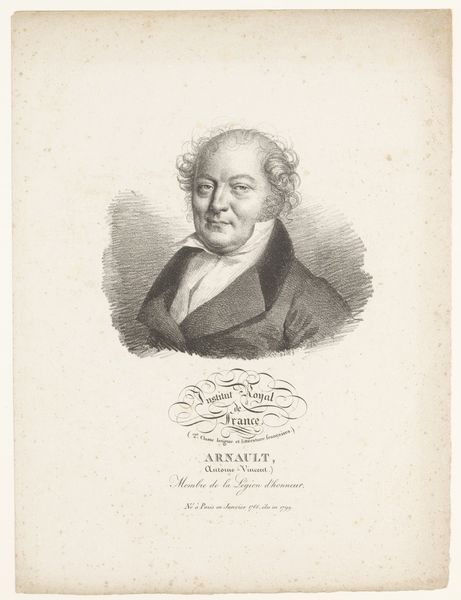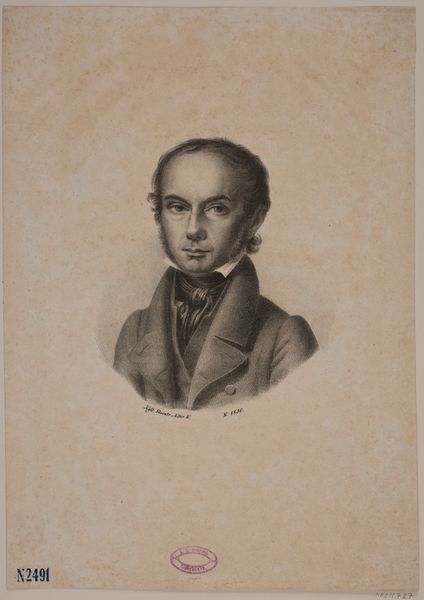
print, graphite, engraving
#
portrait
#
neoclacissism
# print
#
charcoal drawing
#
graphite
#
portrait drawing
#
history-painting
#
academic-art
#
engraving
Dimensions: height 485 mm, width 318 mm
Copyright: Rijks Museum: Open Domain
This is a portrait of Franz Joseph Gall, the brain researcher, made by Zéphirin Belliard in the 19th century. It’s made using a technique called lithography, which involves drawing on a flat stone with a greasy crayon, then using ink to transfer the image onto paper. Lithography was quite a revolutionary technique at the time. Unlike earlier forms of printmaking, it allowed for a wide range of tonal variation, which you can see in the subtle shading of Gall’s face and clothing. It also lent itself to relatively large editions. This meant images could be widely circulated, playing a crucial role in disseminating knowledge. In this case, the print serves to immortalize Gall, promoting his ideas about phrenology – the study of skull shapes as indicators of personality. So, we can see how a specific process helped to give certain ideas real traction in the 19th century. It’s a reminder that materials and making are never neutral; they always play a role in shaping culture.
Comments
No comments
Be the first to comment and join the conversation on the ultimate creative platform.
